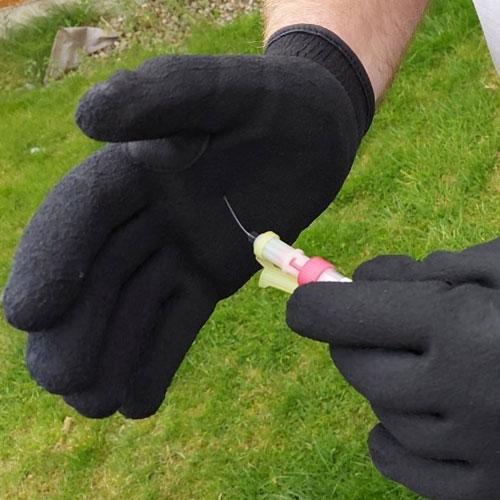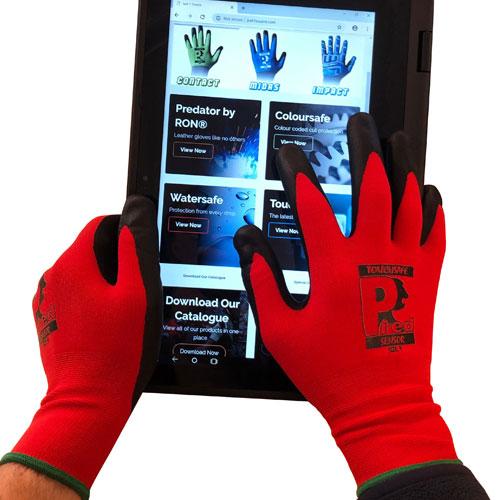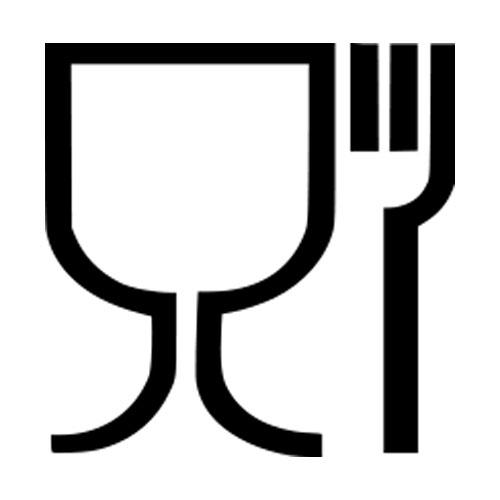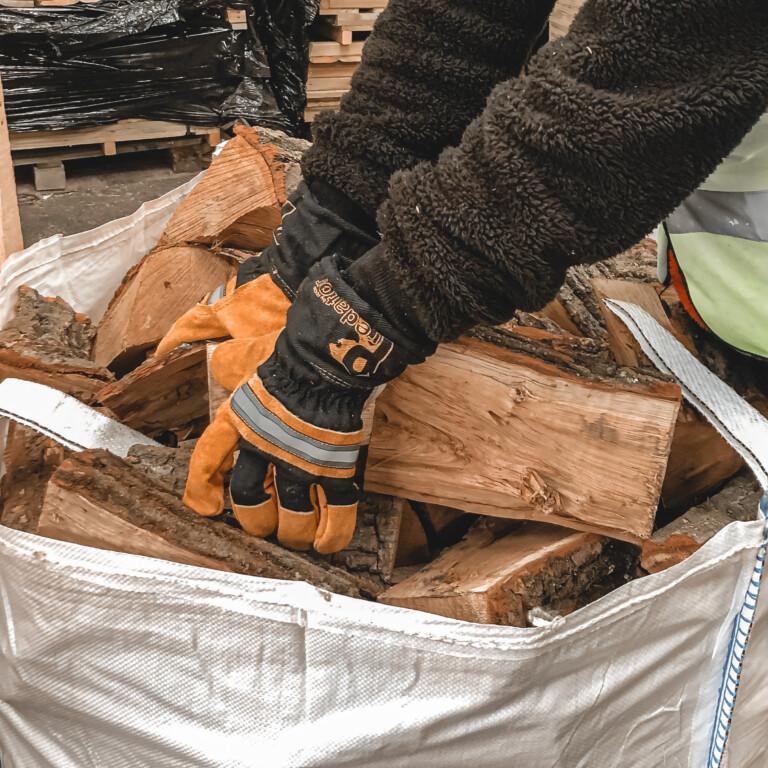Puncture Resistance in Work Gloves
What is a Puncture?
Working in industrial environments, the threat of punctures can be a regular hazard, so it’s important to wear or supply the correct hand protection to negate these threats. A puncture is defined as an object penetrating through a glove… this could be a nail, a splinter, thorn or even a needle.
There are two different types of puncture that can occur – a blunt puncture, or a needlestick puncture. As you can imagine, these punctures carry a different level of severity, so there are different tests in place to separate the two.
Blunt Puncture – EN388:2016
The most common standard in the UK industrial market EN388:2016+A1:2018, is in place to certify under the Mechanical hazards.
One of the main components of EN388:2016+A1:2018 is the puncture test, scored from 1 – 4 (low to high). The test result for puncture resistance is shown as the 4th digit displayed below the test pictogram.
In the puncture test, the sample material is held taut and the testing instrument is driven against the sample. The force (N) required to penetrate (or puncture) the sample dictates the test result as below:
See the performance level requirements below:
| Level | 1 | 2 | 3 | 4 |
|---|---|---|---|---|
| Force (N) | 20 – 59 | 60 – 99 | 100 – 149 | 150 + |
High-Scoring Puncture Resistant Gloves
We have 4 products that meet the highest puncture 4 standard under EN388:2016:
- The Pred Paws offers cut level 2 protection, whilst achieving puncture level 4
- The Pred Mint and Pred Pine both offer cut level C protection and achieve the maximum puncture level 4
- The Power Paws offers cut level E protection, whilst achieving puncture level 4
Needlestick Puncture – ASTM F2878-10
Unlike EN388:2016 where the testing instrument has a blunt tip; the test in ASTM F2878-10 uses a 21G, 25G, or 28G sharp-pointed hypodermic needle to gauge the test result.
Due to the high risks associated with hypodermic needles, this specifically designed test requires 12 samples to calculate an average force (N) for the classification level and scored 1 – 5 (low to high). See below:
See the performance level requirements below:
| Level | 1 | 2 | 3 | 4 | 5 |
|---|---|---|---|---|---|
| Force (N) required to puncture at 500mm/min | ≥ 2 | ≥ 4 | ≥ 6 | ≥ 8 | ≥ 10 |
Needlestick Resistant Gloves
We have recently released our first hypodermic-needle resistant glove, the Pred Needle.
Not only does the Pred Needle offer the maximum level 5 needlestick protection under ASTM F2878-10; It also offers the maximum cut level F protection under EN388:2016.
Which is right for me?
There are clear differences between blunt and needlestick punctures and the risks they carry.
If an application does include needles, you should take precautions to wear needlestick gloves which are certified for use with those materials.
As with any hazard, risk assessments must be carried out when choosing hand protection. It would then be at the Health and Safety Departments’ discretion to decide which product(s) and level of certification would be most suitable.
You should always bear in mind that samples are means-tested, and no material could ever guarantee that punctures will not occur – the focus is more engineered to limiting the damage which could happen in the workplace.
If you would like to discuss the above in more detail or have a requirement for puncture-resistant/needlestick gloves, contact our Sales Team on the below:
Call – 01653 617718
Email – sales@just1source.com







